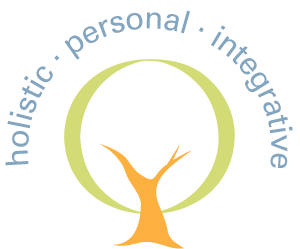
5 Tips for Better Head and Neck Posture
5 Tips for Better Head and Neck Posture
Suffering from neck and/or jaw pain? Your head and neck posture may be making it worse.
A common posture which people develop is the “forward head posture”. It’s exactly as it sounds. The head shifts forward to a position in front of your upper body.
Ideally, when you are sitting, standing or even walking, your earlobe should be in line with your shoulders.
Try this experiment
Sit up straight on a chair, nice and tall. Feel your head lifting up as if being pulled by a string from the back of your head. Keep your chin down. Eyes look straight ahead. Now, touch the back of your neck with the fingertips of both hands and feel the length of your upper neck. You should feel a slight inwards, or anterior curve by feeling the tips of the vertebrae bones. This is called your cervical lordosis. This is good head and neck posture.
Now, go ahead and slouch by rounding your mid and lower back. You will feel your pelvis and spine roll backwards. See where your head is relative to your body. Most likely, your head has shifted forward (relative to your upper body) such that it is now over your thighs. Stay here, and again touch the back of your neck. You will feel the neck has “sagged” into a much deeper anterior convexity or increased cervical lordosis. If this forward head position is repeated frequently over a long time, your neck muscles can shorten and tighten inside the convexity or “cave” of your neck. The vertebral joints in the neck can become misaligned and compressed. Also, the muscles in the front of the neck can become elongated, stretched and weakened.
Imagine repeating this forward head posture over many hours of computer work, reading, driving, eating, watching TV, walking, waiting for a bus or while conversing with people day after day. The development of neck muscle tightness and the altered joint position of the vertebrae in your neck can lead to and exacerbate neck pain, muscle spasms and pain to the jaw and face.
5 Tips to GET A HEAD START and improve your head and neck posture
- Have a friend or relative take photos or a video of your posture (side view is best) at work and at home so you can get a visual picture of your head posture in action. Look at yourself in old pictures. You may be surprised. This is a great first step to becoming more aware of your posture.
- Think aHEAD and be more mindful of your head, neck and back posture during daily activities mentioned above as well as others such as brushing teeth, applying makeup or even more simply, getting out of a chair. “Catch” yourself in mirrors or shop windows. Remember, when your mid and lower back is “rounded” it’s impossible to get your neck and head in the right position.
- Set yourself alarms on your phone to remind you to check your posture with whatever activity you are doing at the moment your alarm sounds.
- Start with adjusting and correcting your spine and head posture with just one or two tasks. For example, during computer use, walk for 1-2 minutes, 3 times a day. Slowly increase the time that you can maintain this position and start to apply to include more daily tasks as you can.
-
Make things a little easier for yourself
- Move the computer monitor closer (it should be in front of you and not to the side). You should be able to read the screen and keep your head positioned with your ears in line with your shoulders (without shifting your head forward).
- Place a cushion or lumbar roll to support the lower spine to prevent slouching, or get a chair with better inbuilt back support. Keeping your spine in a neutral posture will assist you to keep your neck and head in an optimal position.
- Ensure good foot support by placing both feet on the floor or use a foot stool/rest if your feet do not fully touch the floor. Having good foot support enables you to better control the rest of your spine. Therefore, your neck and head will be aligned and less tense.
- Review your need for eyeglass prescription or choice of glasses. Sometimes contact lenses enable you to avoid the forward head posture especially if you have bifocals or multifocals. Some people benefit from glasses specifically prescribed for reading/computer work. You should not need to shift your head forward to read your computer, kindle, tablet or phone screen.
- Make the font size bigger on your screen.
Think aHEAD
Your neck, jaw and indeed your whole body will be thankful – and you will look more elegant too!
Leah Segelov, PT, MA is a Physical Therapist and owner of Segelov Physical Therapy in Manhattan, New York.
Contact Leah for more information at Leah@segelovpt.com on how she can help you, a friend or family member.

 Previous Post
Previous Post Next Post
Next Post



 © copyright 2015 Segelov Physical Therapy, PLLC. All rights reserved.
© copyright 2015 Segelov Physical Therapy, PLLC. All rights reserved.